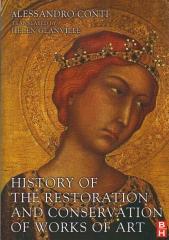At times controversial and uncompromising, always intellectually honest, Alessandro Conti?s book is - astonishingly - the only attempt to comprehensively chart in time, the changing impact of man?s desire to preserve for future generations the materials, meaning and appearances of works of art. Remarkable in its meticulous research of source material and breadth of scope, History of the Restoration and Conservation of Works of Arts, translated by Helen Glanville, charts the practices and underlying philosophies of conservation and ?restored? works of art from the Middle Ages to the end of the nineteenth century. In English-speaking countries, a lack of foreign language skills leaves many unable to consult a wealth of both published and unpublished historical documentation. Developments in conservation have therefore tended toward the scientific and analytical. Access to such documentation leads to better understanding of the present appearance of works of art and of their changing aspect and perception over time. Recent publications indicate that there is a great need for people writing on the subject to be aware of material which is not in their mother tongue: approaches presented as ?new? are in fact merely ?contemporary?, and have been discussed or practiced in other centuries and countries. Just as knowledge of practices and effects of art conservation and restoration should form an integral part of History of Art Degrees, the more theoretic, abstract and historical aspects, should also be part of the training. This book is an invaluable source for academic and public institutions, art historians as well as practicing conservators and lovers of art.

(0 Comentarios)